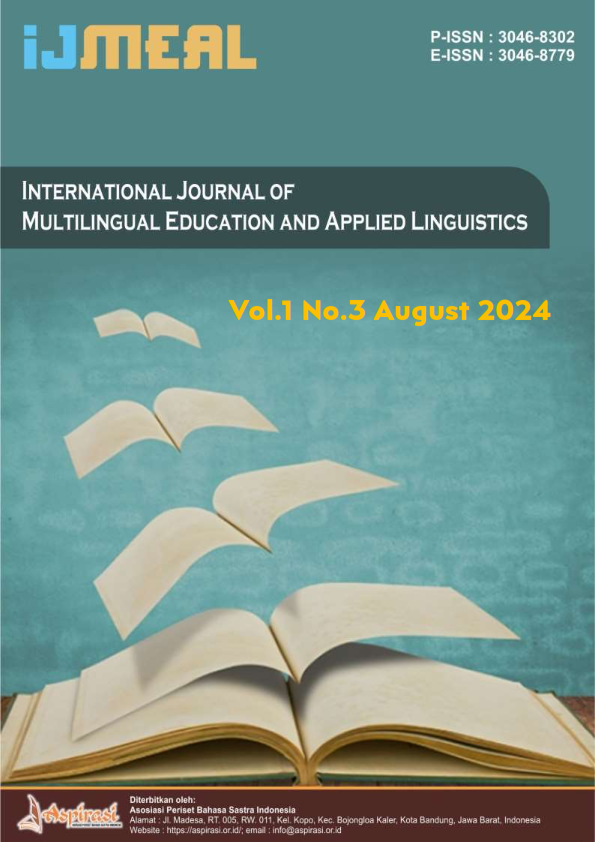Enhancing Multimodal Transportation Through Logistics Education
A Case Study Of Indonesian Institutes
DOI:
https://doi.org/10.61132/ijmeal.v1i3.31Keywords:
Logistics Education, Multimodal Transportation, Transportation Institutes, Indonesia, Operational EfficiencyAbstract
This qualitative study examines the effectiveness of logistics education within Indonesian transportation institutes' multimodal transportation programmes. Fifty cadets were analysed, revealing a positive perception of logistics education's importance and its significant impact on student competency and operational efficiency. Themes emerged highlighting cadets' strong understanding and application of logistical principles, leading to tangible improvements in transportation costs, service quality, and work processes. The findings underscore the critical role of logistics education in preparing students for careers in the transportation sector and improving the efficiency and sustainability of transportation systems. Recommendations include curriculum enhancement, professional development for educators, industry engagement, and the integration of technology. By implementing these recommendations, educational institutions can better align their programmes with industry needs and ensure graduates are equipped to address the sector's challenges. This research contributes to the discourse on transportation education, emphasising the importance of logistics education in shaping the future of multimodal transportation in Indonesia and beyond.
References
Aziz, A. M. A., & Migliaccio, G. C. (2015). 22 Public Private Partnerships in the US transportation sector. Public Private Partnerships: A Global Review, 365.
Berg, H. P. (2013). Human factors and safety culture in maritime safety. Marine Navigation and Safety of Sea Transportation: STCW, Maritime Education and Training (MET), Human Resources and Crew Manning, Maritime Policy, Logistics and Economic Matters, 107, 107–115.
Chakroborty, P., & Das, A. (2017). Principles of transportation engineering. PHI Learning Pvt. Ltd.
Creswell, J. W., & Clark, V. L. P. (2011). Choosing a mixed methods design. In Designing and Conducting Mixed Methods Research (pp. 53–106). Sage Publications, Inc.
Goetz, A. R., Jonas, A. E. G., & Brady, S. (2016). Innovative approaches to improved intermodal transportation infrastructure funding and financing through public-private partnerships: A Denver case study. Mississippi State University. National Center for Intermodal Transportation ….
Kim, H., Sefcik, J. S., & Bradway, C. (2017). Characteristics of qualitative descriptive studies: A systematic review. Research in Nursing & Health, 40(1), 23–42.
Kortüm, G. (2012). Reflectance spectroscopy: principles, methods, applications. Springer Science & Business Media.
Litman, T. (2016). Transportation affordability. Transportation, 250, 360–1560.
Litman, T. (2017). Evaluating transportation equity. Victoria Transport Policy Institute Victoria, BC, Canada.
Neilson, B., & Rossiter, N. (2013). Still waiting, still moving: On labour, logistics and maritime industries. In Stillness in a mobile world (pp. 51–68). Routledge.
Small, K. A. (2013). Urban transportation economics. Regional and Urban Economics Parts 1 & 2, 251–439.
Taylor, G. R. (2015). The transportation revolution, 1815-60. Routledge.
Willig, C. (2014). Interpretation and analysis. The SAGE Handbook of Qualitative Data Analysis, 481.
Yilmaz, K. (2013). Comparison of quantitative and qualitative research traditions: Epistemological, theoretical, and methodological differences. European Journal of Education, 48(2), 311–325.
Downloads
Published
How to Cite
Issue
Section
License
Copyright (c) 2024 International Journal of Multilingual Education and Applied Linguistics

This work is licensed under a Creative Commons Attribution-ShareAlike 4.0 International License.





